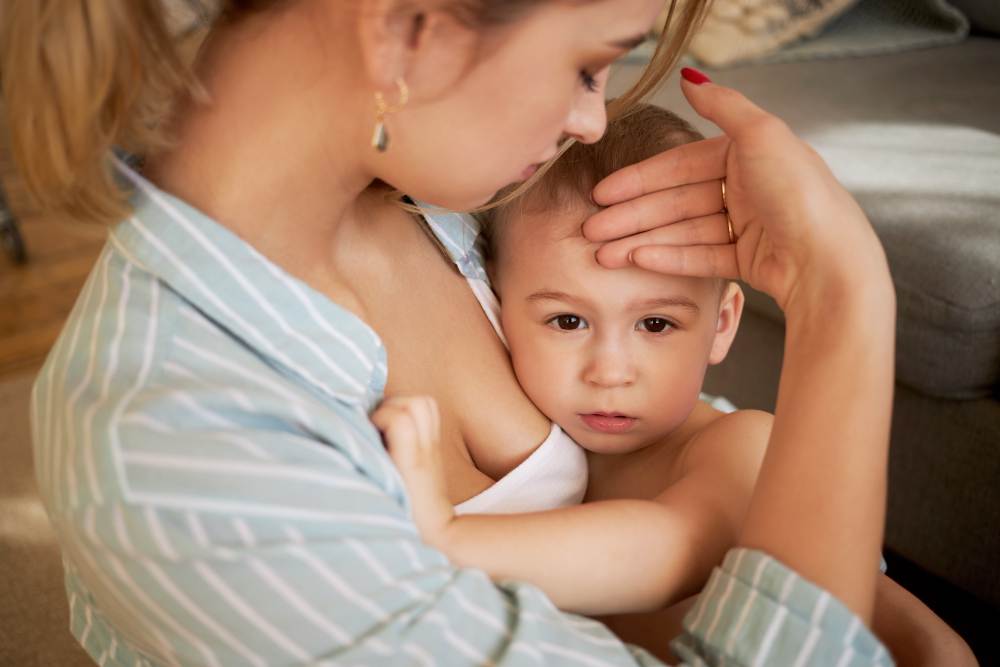Childhood Illnesses
However, much you try to avoid it, your child will get ill at some point, we take a look at some common illnesses

However, much you try to avoid it, your child will get ill at some point, we take a look at some common illnesses (not including Covid) and the best way to treat them. Upset Tummy Sickness and diarrhoea bugs can be caught very easily by children and transmit quickly in schools and other places where lots of children are together.
Sickness often comes first, followed later by diarrhoea and it can be unpleasant for both you and your child.
How to treat an upset tummy Give your child plenty of water to keep them hydrated, you can also buy over the counter rehydration solutions if your child is struggling to keep anything down. Give them ice lollies to suck to try and keep them as hydrated as possible and offer them plain food when they feel up to eating, like plain toast, pasta or boiled rice – you should try and avoid anything too rich or salty. Hopefully your child will improve after 12-24 hours but if symptoms continue then do contact your doctor or call 111. Coughs, Colds and Flu As soon as your child starts mixing with other children at school, they will probably get plenty of colds and sniffles.
Although it may seem never ending, it is actually a positive thing as this exposure to different germs will help build up their natural immune system.
These are not usually serious and will often just run their course, after a few days of runny noses, blocked nose or coughs.
Your child may also have a high temperature and may experience a headache.
Flu can be more serious and leave your child feeling quite unwell, achy and uncomfortable. How to treat cough, colds and flu As with an upset tummy, make sure your child has plenty to drink.
If they are feeling unwell, then infant paracetamol may help, just check the dosage on the bottle before giving. If symptoms persist, you could talk to your pharmacist to see if there are any over the counter medicines that may help but remember that coughing is the body’s way of keeping the lungs clear. If your child has a fever with a rash, not interacting or having trouble breathing then do seek help ASAP. Chickenpox Chickenpox is very common with most children catching it at some point during their early childhood. It is a mild disease with itchy spots appearing on your child’s body.
It can be passed to someone who hasn’t had it before very easily and is most infectious 1-2 days before the rash appears and will continue to be infectious until the spots scab over. How to treat chickenpox The spots can be very itchy, but it is important to try and stop your child from scratching the spots, to stop scarring – easier said than done, we know.
Try to keep their fingernails short and also pop socks over their hands at night.
To relieve the itching, you can use calamine lotion or other cooling gels – ask your pharmacist for some over the counter solutions.
Keep an eye on any spots that have been scratched to check they don’t become infected – if they do, you will need to see your doctor. Fever A fever is when your child’s body temperature is above 38⁰C.
Your child may also feel unwell, tired, pale, have aches and pains as well as a poor appetite.
This is your child’s natural response to an infection and can often just be left to run its course. How to treat a fever Like with the other illnesses, it is important to make sure your child drinks plenty of fluids to stop them getting dehydrated as this can lead to more serious issues.
Fevers are common in young children and usually just caused by a viral infection and will clear up on their own.
Occasionally they can be a sign of something more serious and so if you are worried or your child isn’t getting better or a rash appears, then do contact your doctor. If your child does get ill and you feel that something isn’t right, then do trust your parental instinct and get help.
However, much you try to avoid it, your child will get ill at some point, we take a look at some common illnesses